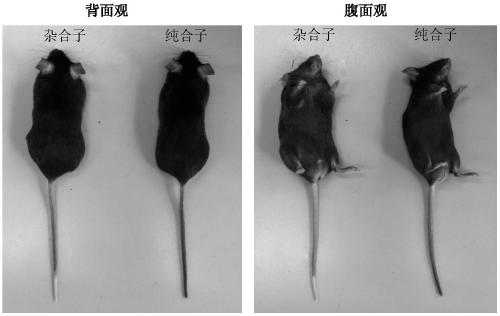Construction method of VDR gene conditionality knockout floxed mouse model
A construction method and mouse model technology, applied in genetic engineering, chemical instruments and methods, biochemical equipment and methods, etc., can solve problems such as difficult to judge in situ lesions or secondary lesions, unknown mechanism of action, wrong conclusions, etc. , to achieve the effect of avoiding the lethal restriction
- Summary
- Abstract
- Description
- Claims
- Application Information
AI Technical Summary
Problems solved by technology
Method used
Image
Examples
Embodiment 1
[0038] The VDR conditional gene knockout mouse model was constructed by gene targeting strategy: flox sequences in the same direction were inserted at both ends of exon 3 of the mouse VDR gene; when Cre recombinase expressed in specific tissues was introduced, Cre recombinase Identify the Loxp site, excise the sequence between the loxp site, and achieve the purpose of conditionally knocking out the VDR gene in a specific tissue or cell, including the following steps:
[0039] (1) Construction of targeting vector
[0040]The VDR genome sequence was obtained from the Ensembl database, and the VDR-floxed targeting vector was designed according to the genome sequence. The mouse VDR gene has a total of 10 exons. According to bioinformatics analysis, the flox region is the third exon loxP, neo, frt, etc. The element is placed in the intron, and the deletion of the flox region can result in the loss of ATG initiating translation, and theoretically there will be no more protein produc...
Embodiment 2
[0069] Verification of the gene knockout efficiency obtained in VDR-floxed mice:
[0070] VDR fl / fl The mice were mated with EIIa-Cre mice, and the offspring were extracted from the mouse tail DNA for genotype identification, and VDR was selected fl / fl / Cre+ mouse intestinal tissues were quantitatively analyzed for VDR expression and VDR gene sequence analysis, and compared with wild type, the specific steps are as follows:
[0071] (-) Mating, breeding and identification of animals:
[0072] VDR fl / fl The mice were mated and bred with EIIa-Cre mice, and the offspring were extracted from the mouse tail DNA at the age of 4 weeks for genotype identification. The identification primers were:
[0073] VDR-floxed identification primers:
[0074] Upstream: 5'-TCGGAAGGACATCCAAACTC-3
[0075] Downstream: 5'-GCCTATGGGTGAAGAGTCCA-3
[0076] Cre identification primers:
[0077] Upstream: 5'-ATTTGCCTGCATTACCGGTCG-3
[0078] Downstream: 5'-CAGCATTGCTGTCACTTGGTC-3
[0079] PCR reac...
Embodiment 3
[0092] Example 3 Verification of local gene knockout on the obtained VDR-floxed mice
[0093] VDR fl / fl The mice were mated and bred with Alb-Cre mice, and the genotype was VDR fl / wt / Alb-Cre + Mice were reintroduced with VDR at 8 weeks of age fl / fl The mice were mated, and the tail DNA was extracted from the offspring for genotype identification; the liver tissue was selected for immunofluorescence and western blot analysis to observe the expression of the liver VDR gene. The specific steps are as follows:
[0094] (-) Mating, breeding and identification of animals:
[0095] VDR fl / fl The mice were mated and bred with Alb-Cre mice, and the offspring were extracted from the mouse tail DNA at the age of 4 weeks for genotype identification. The identification primers were:
[0096] VDR-floxed identification primers:
[0097] Upstream: 5'-TCGGAAGGACATCCAAACTC-3
[0098] Downstream: 5'-GCCTATGGGTGAAGAGTCCA-3
[0099] Cre identification primers:
[0100] Upstream: 5'-ATTTG...
PUM
 Login to View More
Login to View More Abstract
Description
Claims
Application Information
 Login to View More
Login to View More - R&D
- Intellectual Property
- Life Sciences
- Materials
- Tech Scout
- Unparalleled Data Quality
- Higher Quality Content
- 60% Fewer Hallucinations
Browse by: Latest US Patents, China's latest patents, Technical Efficacy Thesaurus, Application Domain, Technology Topic, Popular Technical Reports.
© 2025 PatSnap. All rights reserved.Legal|Privacy policy|Modern Slavery Act Transparency Statement|Sitemap|About US| Contact US: help@patsnap.com



